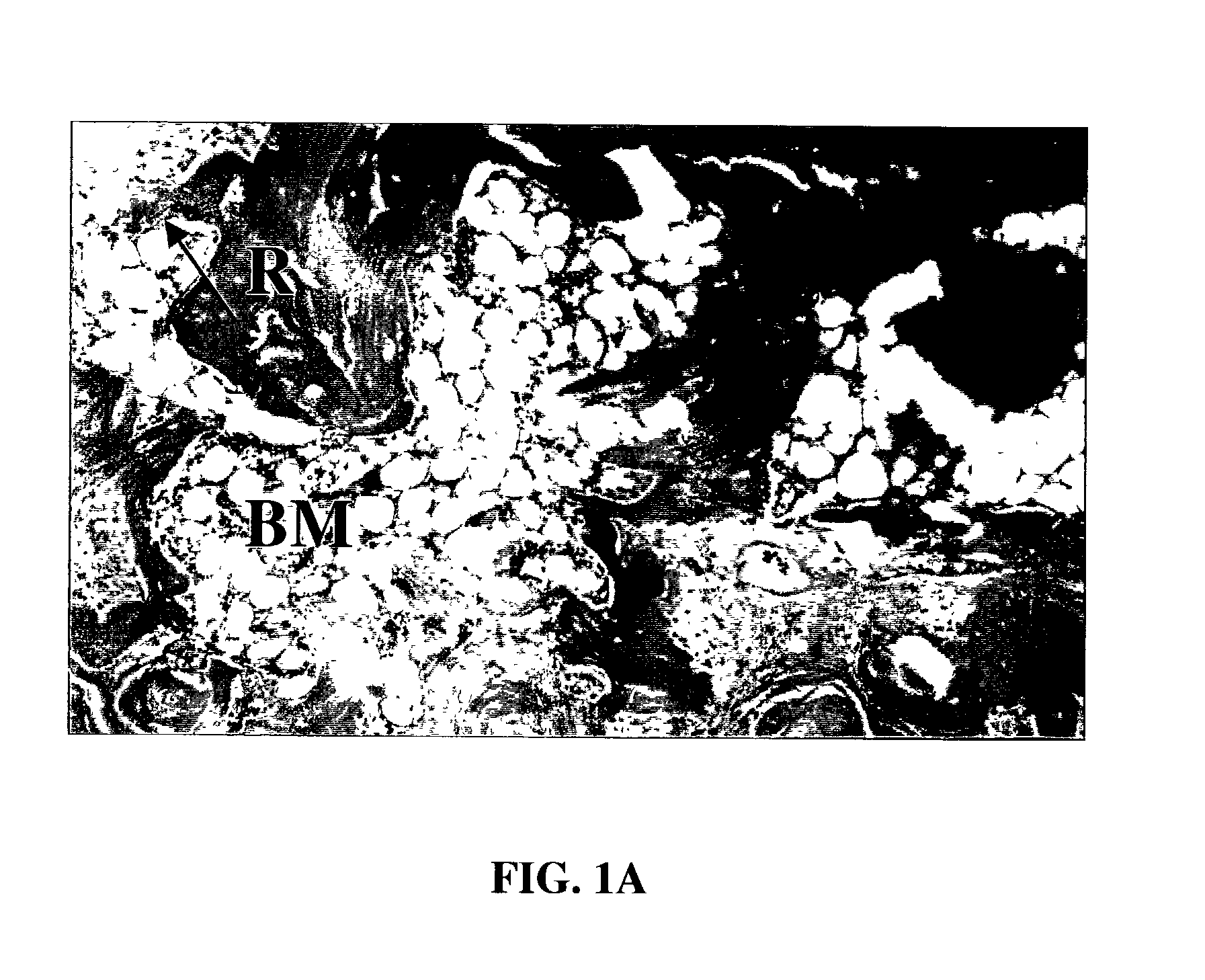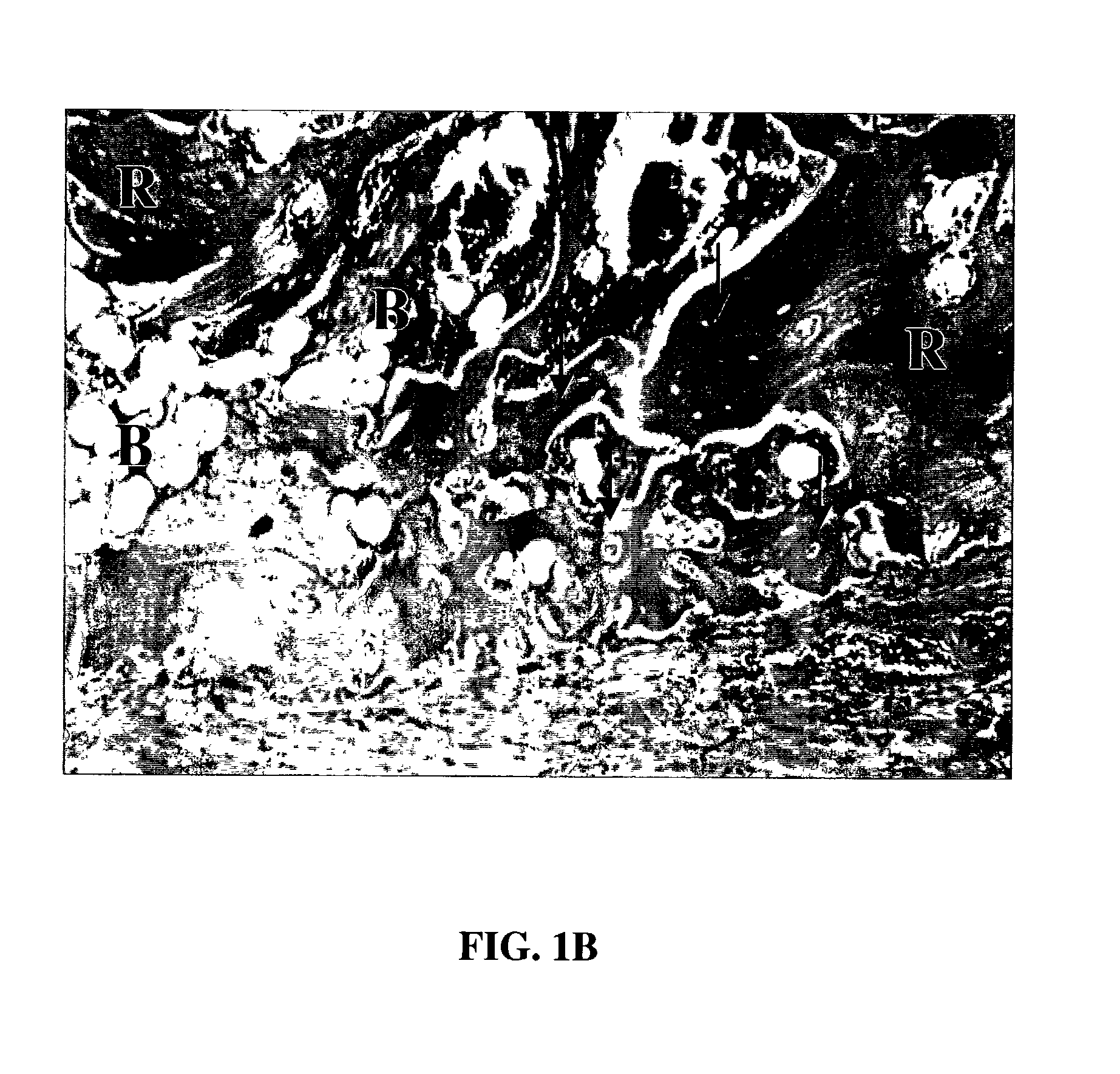Tissue repair compositions and methods for their manufacture and use
a technology for tissue repair and composition, applied in the direction of prosthesis, solvent extraction, separation process, etc., can solve the problems of limiting the potential effectiveness of tissue repair factors within the dbm, and catching tissue repair factors
- Summary
- Abstract
- Description
- Claims
- Application Information
AI Technical Summary
Benefits of technology
Problems solved by technology
Method used
Image
Examples
example 1
2.0 M—2 Day Extraction with Citric Acid
[0037]Twenty mL of 2.0 M citric acid is added per gram of DBM in a 500 mL polypropylene centrifuge tube. The citric acid and DBM are stirred at room temperature for 48 hours. The DBM / solvent dispersion is filtered through a 100 μm mesh. The residual that does not pass through the mesh is further washed with water. The wash is filtered and combined with the original filtrate. The filtrate and residual are saved and set aside.
example 2
3.0 M—2 Day Extraction with Citric Acid
[0038]Twenty mL of 3.0 M citric acid is added per gram of DBM in a 500 mL polypropylene centrifuge tube. The citric acid and DBM are stirred at room temperature for 48 hours. The DBM / solvent dispersion is filtered through a 100 μm mesh. The residual that does not pass through the mesh is further washed with water. The wash is filtered and combined with the original filtrate. The filtrate and residual are saved and set aside.
example 3
3.0 M—3 Day Extraction with Citric Acid
[0039]Twenty mL of 3.0 M citric acid is added per gram of DBM in a 500 mL polypropylene centrifuge tube. The citric acid and DBM are stirred at room temperature for 72 hours. The DBM / solvent dispersion is filtered through a 100 μm mesh. The residual that does not pass through the mesh is further washed with water. The wash is filtered and combined with the original filtrate. The filtrate and residual are saved and set aside.
PUM
 Login to View More
Login to View More Abstract
Description
Claims
Application Information
 Login to View More
Login to View More - R&D
- Intellectual Property
- Life Sciences
- Materials
- Tech Scout
- Unparalleled Data Quality
- Higher Quality Content
- 60% Fewer Hallucinations
Browse by: Latest US Patents, China's latest patents, Technical Efficacy Thesaurus, Application Domain, Technology Topic, Popular Technical Reports.
© 2025 PatSnap. All rights reserved.Legal|Privacy policy|Modern Slavery Act Transparency Statement|Sitemap|About US| Contact US: help@patsnap.com



